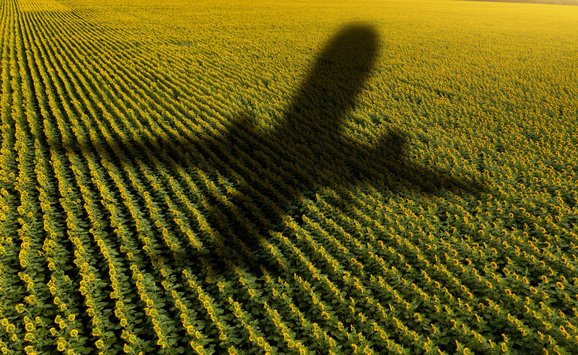Forests and farms supply a wide array of valuable ecosystem services including sequestering carbon, harboring biodiversity, and preventing soil erosion. Yet forest and farm managers rarely, if ever, receive a financial reward for these services. As a result, from society's perspective, they may be too quick to clear trees and engage in other activities that disrupt ecosystem benefits. An increasingly popular approach to this problem is to pay land managers for the ecosystem services their parcels provide.
Payment-for-ecosystem-services (PES) programs have been established in a number of places around the globe, and they function at a variety of geographic scale: emerging markets for carbon sequestration credits constitute an international program; national forest conservation programs are operating in Australia, Costa Rica, and Mexico; and the World Bank, among others, has piloted watershed-level initiatives in several countries.
Why Precise Measuring Matters
Because payments are based on the quantity of services supplied, PES programs must measure the ecosystem services, a difficult task. Measurements depend on complicated ecological relationships that are often poorly understood. For example, the contribution of a hectare of forest to aquifer recharge depends on the flora, soil, hydrology, and weather in the forest. Given the challenges involved in measuring ecosystem services, most PES programs use relatively coarse estimates, or "proxies."
For example, the Costa Rican national initiative—probably the world's best-known PES program—uses a simple proxy: whether a parcel is forested or not. The proxy does not take into account variation in the levels of ecosystem services that forested plots provide due to the number and type of trees present, proximity to surface and to ground water, or slope.
Such blunt proxies can be inefficient. Land managers in Costa Rica receive the same payments for a hectare planted with commercial teak as for one planted with native species. However, by definition, a teak plantation harbors less biodiversity. In addition, it can actually contribute to soil erosion rather than preventing it because teak's large leaves tend to concentrate rain droplets into more disruptive streams. The Costa Rican program would get more "bang for the buck" if it used a proxy that distinguished between types of forests.
More precise proxies help when PES programs aim to preserve the supply of more than one ecosystem service. An example is a program that seeks to conserve both wildlife habitat and aquifer recharge. Unless hectares that provide relatively high levels of wildlife habitat also always provide relatively high levels of aquifer recharge, PES administrators can enhance program efficiency by identifying hectares that do both well and targeting them for payments.
As awareness of these issues grows in Costa Rica and elsewhere, program administrators are increasingly using more precise proxies, such as the number of trees per hectare.
Why Targeting Matters
Even a perfect measure of the ecosystem services provided by each parcel enrolled in a PES program would be insufficient to measure the overall effectiveness of the program. The simple reason is that if a PES program does not lead to an increase in the provision of ecosystem services compared to what would have happened in the absence of the program—that is, the baseline or "counterfactual"—then it has not accomplished anything.
Imagine a PES program focused on forest conservation that makes payments to managers of ecologically rich forest land, who have no incentive to clear the land because it is ill-suited for logging, agriculture, or urbanization. Payments to these managers would have little impact on deforestation because the risk of clearing was minimal to begin with. In contrast, payments to managers who have incentives to clear their land would be much more likely to have an impact.
For PES programs to be effective and efficient, focusing on parcels with a higher likelihood of being cleared makes all the difference. The Costa Rican program again provides a useful example. The program is voluntary, that is, land managers must opt in. But many of the participants to date have been managers who stand to gain little by clearing the tree cover. In other words, the program is sometimes focusing on the "wrong" land.
Targeting and Precision in Copán, Honduras
A Honduran pilot project illustrates how targeting and the use of more precise proxies can be used to enhance effectiveness and efficiency of a PES system. Approximately 1,000 families in two watersheds in the municipality of Copán Ruinas, Honduras (or Copán), get their drinking water from three local rivers: El Malcote, El Escondido, and Don Cristóbal. The quality and quantity of this drinking water is lessened by human activities like illegal logging, fires, the application of agrochemicals, and unsustainable agricultural land uses more generally. A PES program is being developed to mitigate these impacts.
To ensure that the PES program would have a significant impact, program administrators used a two-step approach to target sites where the provision of ecosystem services is both high and under threat. First, they ranked water sources based on the number of households they service, current levels of water extraction, and the number of potential future households using the sources. Second, they ranked sites in the drainage areas of these water sources based on their potential for providing watershed services and their vulnerability to reductions of these services. In doing this, they took into account rock type, presence of soil failures or fractures, soil texture, slope, land use, organic cover, and pollution sources.
After targeting the program to high-benefit, high-risk sites, the next step was to precisely measure the hydrological services these sites provide. To this end, program administrators developed an index of 15 combinations of land uses and land management practices commonly observed in Copán (see the table on page 21). Primary forest with surveillance (that is, monitoring) received the highest ordinal "services rank" while annual crops with no sustainable practices received the lowest. The index was constructed by 30 international experts in the field during a two-day workshop organized for this purpose alone.
Finally, program administrators developed a method for basing payments on the level of ecosystem services provided by each site, which provides land managers with incentives to move from lower-ranked to more highly-ranked land uses and management techniques. For a land-use change such as from coffee to forest, payments are based upon the estimated opportunity cost (for example, forgone profit from coffee). For a shift among management practices within a land-use category, for example from shade coffee to organic coffee, payments cover the cost of obtaining an organic certification.

The program’s success will depend on developing strategies and methods for targeting payments to ensure they actually change behavior.
Scaling Up Targeting and Precision: The Issue of Cost
The Copán program nicely illustrates not only the potential gains from targeting and precision in measuring ecosystem services, but also the transaction costs of realizing those gains. Identifying priority parcels and the measuring services provided by these parcels took real effort, and generated real costs.
The Copán approach may work well for a single watershed. At larger scales, such as a country or the entire world, it may not be practical, however. For example, it is feasible to estimate carbon density in a forest parcel with a thorough local sample (although cost rises with accuracy even at that scale) but the cost of such an approach applied to large numbers of parcels may outweigh gains from precision.
Hence, policymakers face a trade-off. To achieve large-scale benefits, they should apply PES programs at large scales. Yet at such scales, the cost of targeting and precise proxies for ecosystem services provision becomes prohibitive.
As is so often the case, many hope that technological innovation can step into the breach. Of particular relevance for the forest-carbon case, remote-sensing technologies have steadily improved over the past several decades. Scientists hope to soon be able to accurately estimate forest carbon density relying solely on the information available from satellite images with rapid global coverage. However, reality is likely to intervene in the form of declining public investment in satellite measurements of the Earth.
A promising concept that has received considerable attention, PES has the potential to become a conventional environmental management tool. Whether it lives up to its early billing, however, will depend on the ability of its proponents to develop strategies and methods for targeting payments to ensure they actually change behavior, and for more precisely measuring ecosystem services to ensure that payments are as cost-effective as possible.







